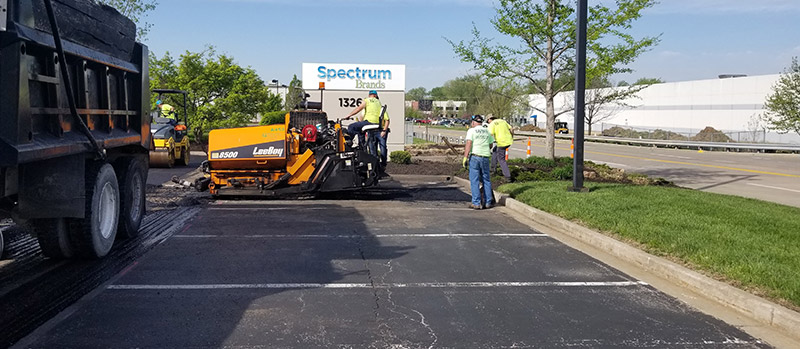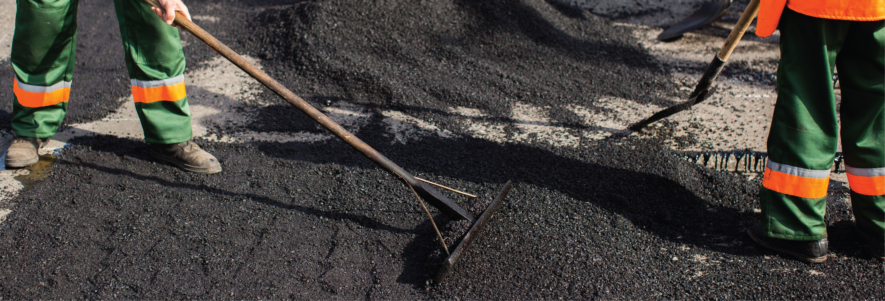The Of A1 Professional Asphalt & Sealing Llc
The Of A1 Professional Asphalt & Sealing Llc
Blog Article
Facts About A1 Professional Asphalt & Sealing Llc Uncovered
Table of ContentsGetting My A1 Professional Asphalt & Sealing Llc To WorkA1 Professional Asphalt & Sealing Llc for BeginnersA1 Professional Asphalt & Sealing Llc Fundamentals ExplainedMore About A1 Professional Asphalt & Sealing LlcThe Definitive Guide for A1 Professional Asphalt & Sealing Llc

The oil in a cars and truck engine is not just oil. It contains a selection of additives to boost the automobile's performance. These consist of polymers, viscosity modifiers, warmth stabilizers, added lubricants, and wear additives. The REOB contains all the ingredients that remained in the waste oil along with the wear metals from the engine (generally iron and copper).
However, by making lots of blends using different REOB examples and various asphalt binders, the variants largely can be balanced out. A number of States supplied examples of well-known REOB make-up to TFHRC researchers, who assessed the examples to contrast the percentage of included (understood) REOB to the located (tested) amount. The evaluations revealed a similar percent of included and located REOB.
A1 Professional Asphalt & Sealing Llc - The Facts
They obtained a frustrating response. The TFHRC scientists examined 1,532 examples from 40 States, one Canadian province, and 2 Federal Lands Highway divisions. They assessed each example twiceamounting to greater than 3,000 analyses. None of those States recognized that the asphalt they were purchasing included REOB. One State insisted its examples had no REOB.
Of the 1,532 samples examined, 12 percent had REOB, and some included appreciably high degrees of it at 1020 percent. The highest degree was 34 percent in a sample from Texas, which TxDOT had actually made use of in a patching substance. This testing likewise disclosed the visibility of phosphoric acid in 11 percent of the samples, and 2 percent had ground tire rubber.
2 years ago at TRB's yearly meeting, the Federal scientists held an REOB workshop and presented the searchings for of their lab evaluations to a standing room-only group. Some agencies do not especially prohibit REOB, they do impose physical tests that avert its useeffectively a restriction. Others do not prohibit it by requirements, yet have arrangements with asphalt suppliers to avoid the use of REOB
The Greatest Guide To A1 Professional Asphalt & Sealing Llc
A handful do enable REOB, some within specific restrictions. For instance, Ohio and Texas limit degrees to less than 5 percent of the asphalt. To establish a trusted examination method that all States can use, the TFHRC scientists set up a round-robin examination plan. The participants are 11 State freeway agencies (Illinois, Massachusetts, Minnesota, Mississippi, Montana, North Carolina, Oklahoma, South Carolina, Texas, Vermont, and Wyoming), 2 independent screening laboratories, the Ministry of Transport in Ontario, Queen's College in Ontario, and an Ontario paving service provider.
The individuals are examining the samples separately utilizing the standards offered by the TFHRC scientists. The result will be a proposed AASHTO test method that any State can take on and utilize.
The sidewalk with REOB, which lies 0.6 mile (1 kilometer) from the pavement without REOB, has identical subgrade, website traffic thickness, and climate. Nevertheless, the section of Highway655 with 5 to 10 percent REOB showed substantial breaking. In this instance, the presence of REOB was the recognized reason for cracking at a low temperature levels.
An area of test pavement in Minnesota (MN1-4) found to include REOB also cracked prematurely. The sidewalk carried out well for the first 3 to 4 years, yet after that started to split.
The smart Trick of A1 Professional Asphalt & Sealing Llc That Nobody is Discussing
The tests were not considerable, however they showed that at degrees of 6 percent or even more, the tensile strength of the asphalt dropped dramatically. At a level of 3.5 percent REOB, the variant in the physical examination methods was greater than the effect of REOB. In truth, it was hard for scientists to examine whether REOB was existing.

One binder criterion considered is the difference between the reduced temperature crucial requirements temperature for stiffness (S) in the bending light beam rheometer and the flexing Learn More Here light beam rheometer creep slope (m-value) noted as Tcritical. TC = TC (S) TC (m-value). Evaluation of this parameter is still continuous. Two independent research groups, one from AASHTO and the various other from the Asphalt Institute, wrapped up that more research study is required on the usage of REOB in asphalt.
Formerly, all asphalt screening determined design homes such as rigidity. These examinations do not reveal what materials had been added to the asphalt.

Some Known Details About A1 Professional Asphalt & Sealing Llc
These results demonstrate there are weaknesses in the standard engineering testing procedures that might be manipulated. The manufacturer might have an economic advantage and the item passes all the standardized tests, but the item may not be advantageous to making sure lasting performance. To address this issue and the development of new asphalt ingredients and extenders, TFHRC is starting a research study program to make use of portable spectroscopic tools, x-ray fluorescence spectroscopy, and Fourier change infrared spectroscopy to enable analyses to be carried out in the field as opposed to needing to take samples back to the laboratory.
Report this page